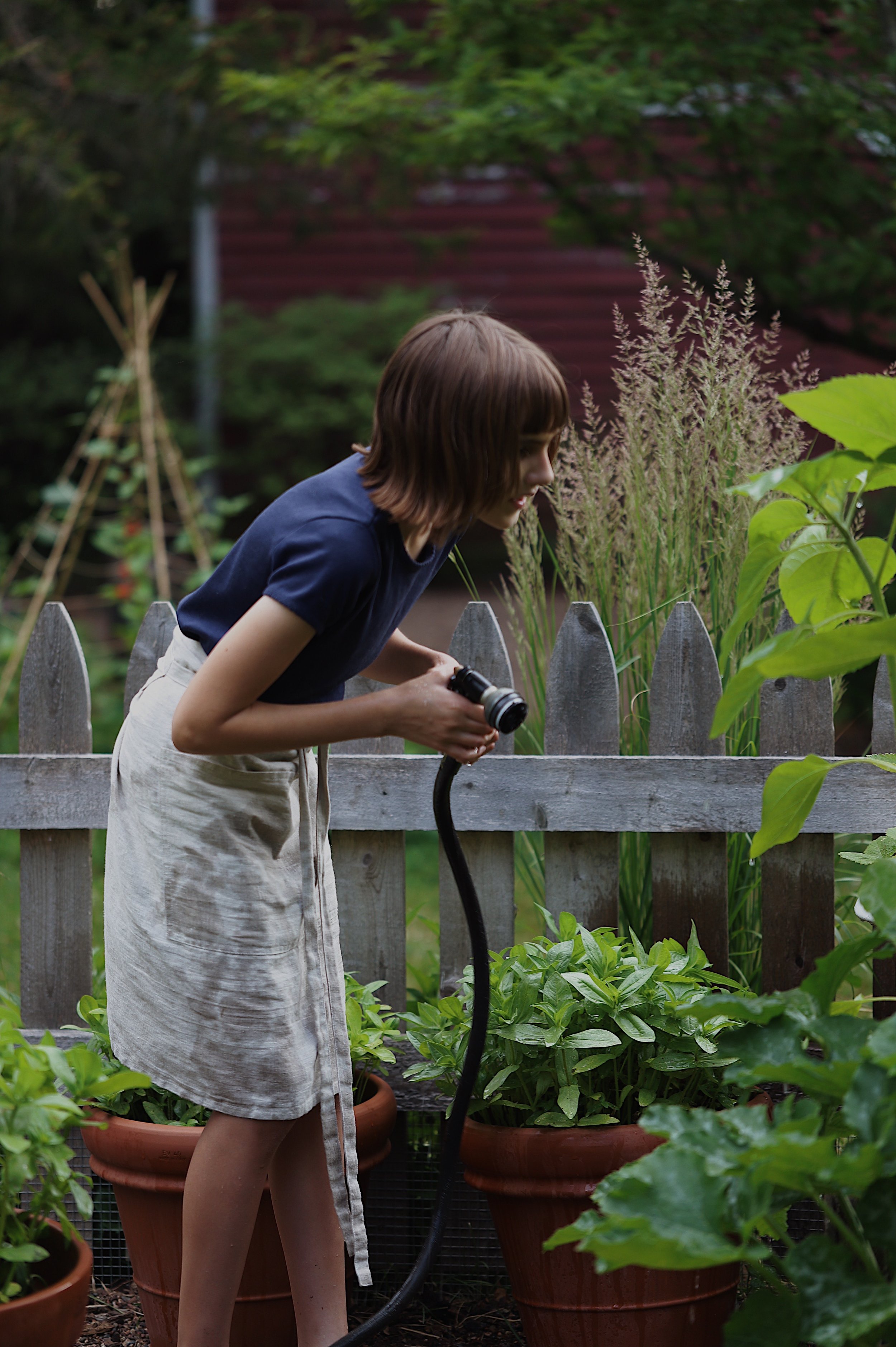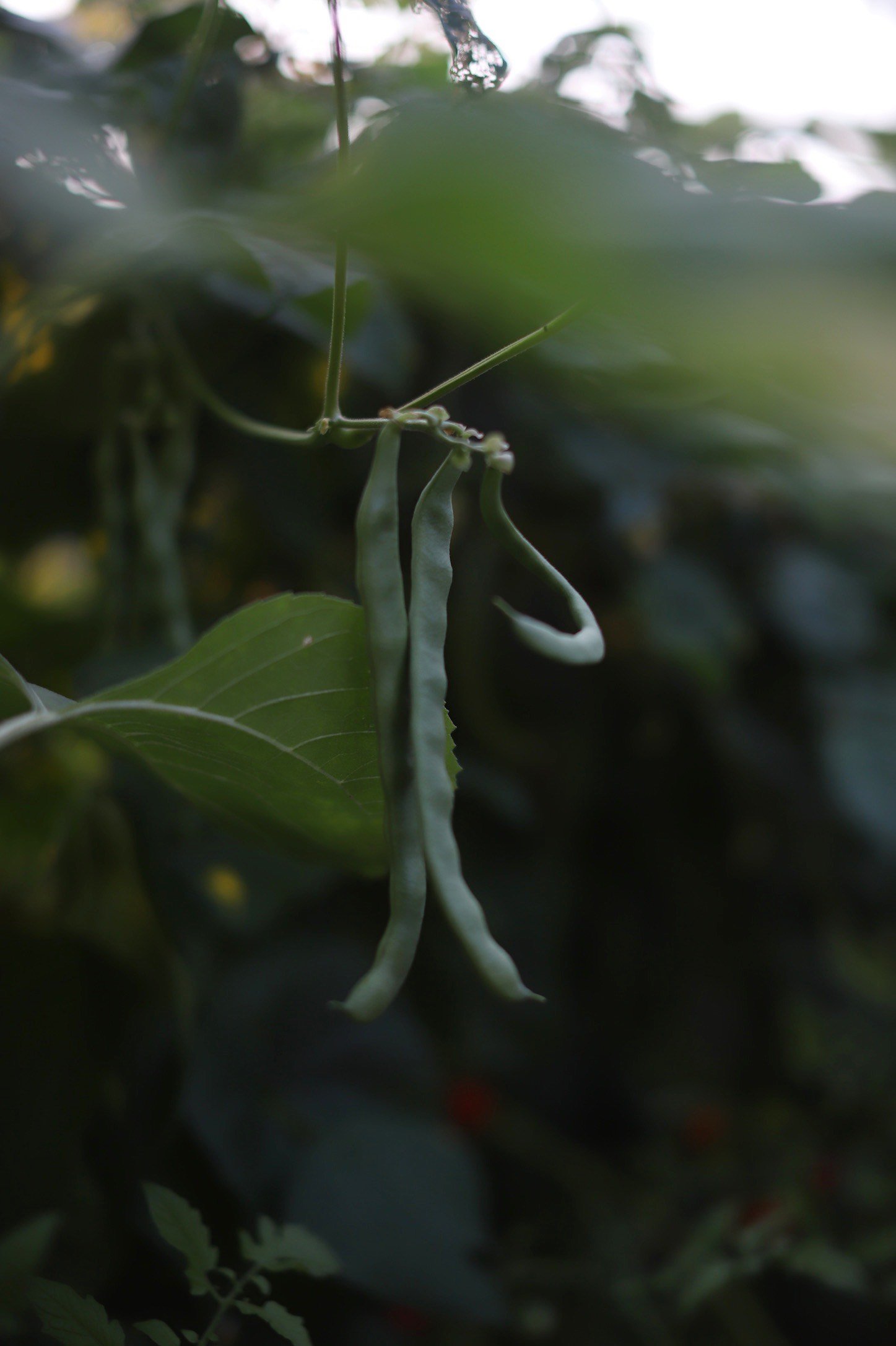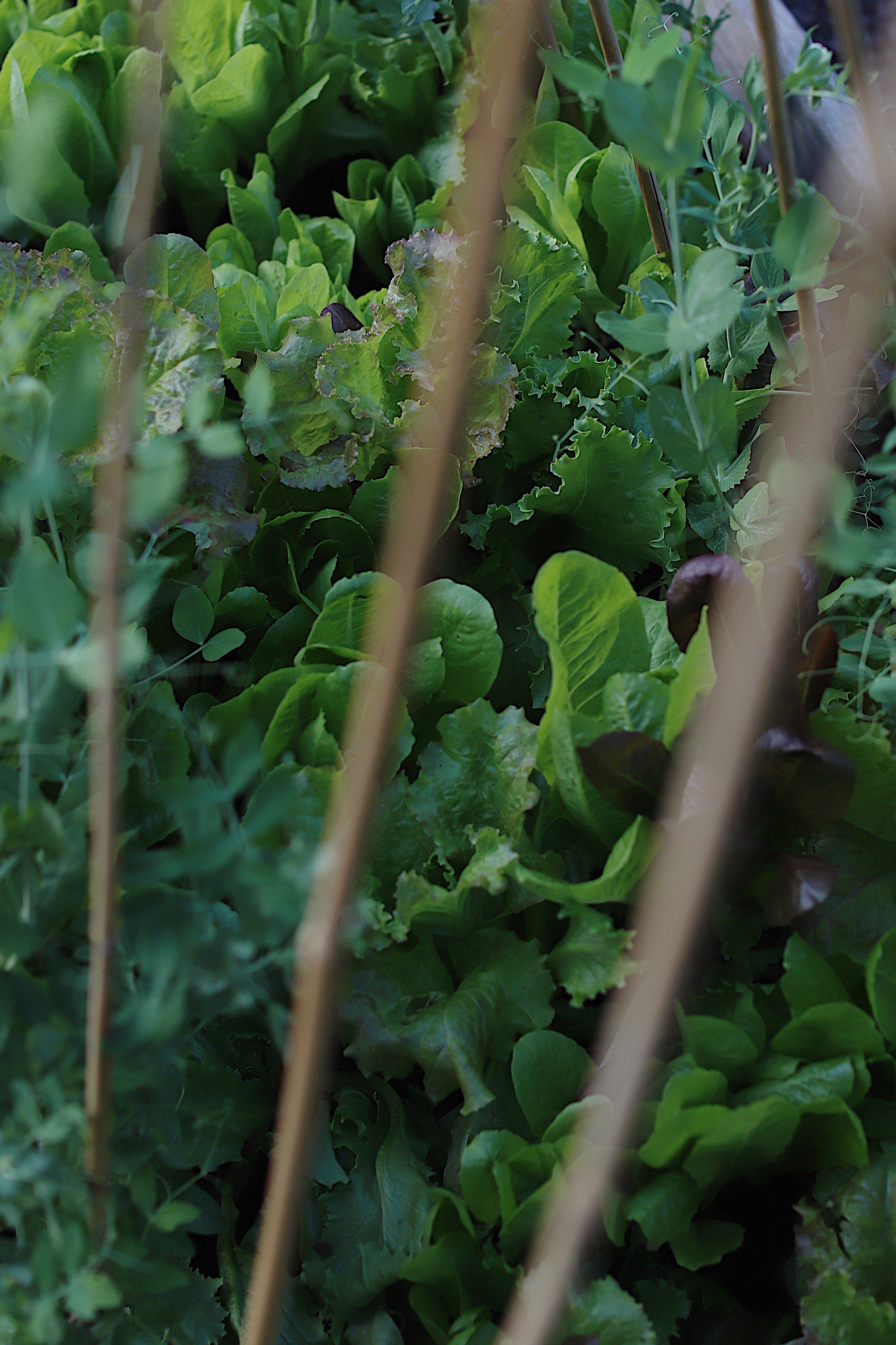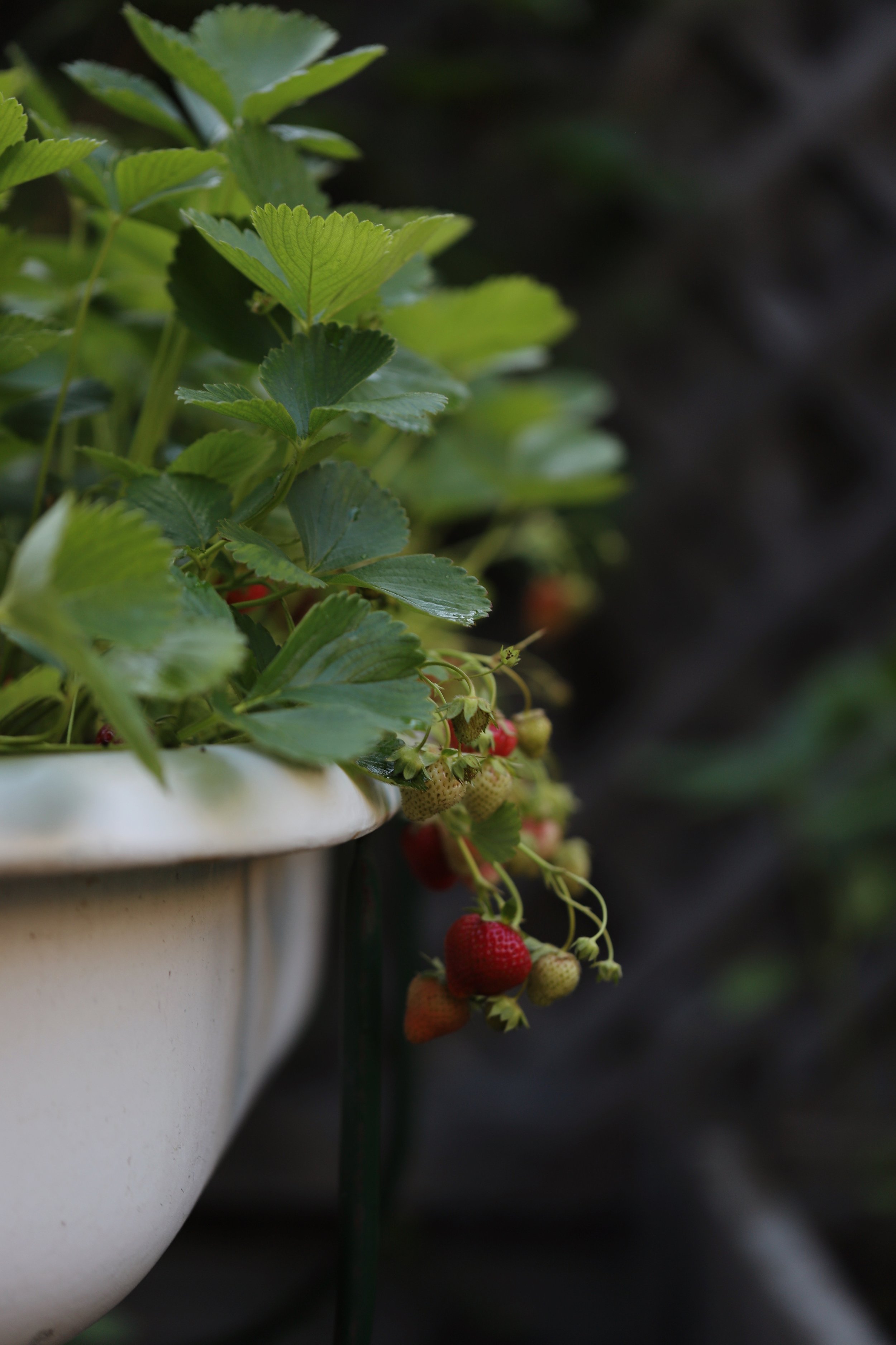Crops to Grow with Children
When other parents ask me what they should grow with their children, to help lure them into the garden, my first inclination is to say “anything, everything!” But some plants have a way of drawing children into gardening without parents doing much of anything.
Last summer, my three-year-old niece Audrey spent hours humming and singing while picking strawberries in my garden. I didn’t invite her to do it – nor did I coax her to keep at it. The bright red berries grabbed her attention and kept it for what seemed like hours.
Watching her pick the strawberries, I noticed what she enjoyed most was the suction cup sound the berries made when she popped them off their stems. Of course, Audrey also loved working out, in her own little way, which ones were sweet, sour, mushy, and just right.
After she’d picked what seemed like a hundred strawberries, Audrey joined my daughter Eloise inside the bean teepee by our barn. There, the girls picked bean after bean, feeding each one to our insatiable dog Gus. That is, until my sister-in-law brought out the hose and let the children take turns spraying the plants…and everything else!
If you watch children closely, they’ll show you what crops they like best. At my house, they gravitate towards plants that can be eaten fresh in the garden or ones that make planting and harvesting feel like play. For a child, pulling a potato out of the soil is like digging for buried treasures. Heaving a carrot from a pot, especially one that is red or yellow or purple, feels like pulling a toy out of a goodie bag. You’d be surprised how many children will eat a salad if you let them pick the lettuce and other toppings themselves.
Although I started this list hoping to share my 5 favorite crops to grow with children, 5 quickly turned to 12 and then 12 almost turned to 20. The problem with 20 is that it starts to feel like “too much.” And if there’s one thing children don’t need it’s “too much.” So, here’s a list of what I think are the most essential crops to get children planting and playing in the garden.
Pumpkins
If I had to choose one crop to introduce children to the wonders of gardening, it would be the pumpkin. Their nice big seeds make sowing easy for small hands, and I love that they come in so many wonderful shapes, sizes, and colors. Mini pumpkins like the white Boo, palm-size Munchkins, and Jack-Be-Littles grow well in half-whiskey barrels; larger pumpkins, like the kind you carve for Halloween, need a lot of room for their vines to grow up or out. If you want to grow a good carving pumpkin, Jack of All Trades is a great choice.
Radishes
Radishes are often called “springers” because they sprout so quickly it feels like they’re practically springing from the earth. If you want instant gratification, this is the crop for you! Radish seeds sprout within just a few days of sowing and the mature plant is typically ready to be picked within 30 days. They’ll also grow right through spring, summer, and fall and can be planted in succession for a continuous supply. Since they take up so little space, I like to plant them around the borders of my beds and between larger, taller plants. Children love to pluck them from the earth and will “ooh” and “ahhh” if you grow varieties in different shapes and colors.
Carrots
Similar to radishes, harvesting carrots is like digging up a long-lost treasure. When you think of this common root vegetable, what probably comes to mind is the bog-standard orange variety, but there is a slew of different varieties ranging in sizes and colors. My children love growing the small round Thumbelina and Parmex varieties, and I personally can’t resist planting a few rows of baby-finger-size Minicors. If your children are fans of color, try planting the Kaleidoscope variety, which will produce five different colors of carrots. If space is an issue, you’ll love how carrots grow well – some might even would say best – in containers with loose soil. I’ve grown them in the ground, in raised beds, and in window boxes, baskets, and pots.
Potatoes
Potatoes are a wonderful crop to grow with children. They’re nutritious, tasty, easy to grow, and a joy to harvest. Plus, most children know and love them! If you have lots of room in the garden, you can grow them in rows for a size-able crop. If space is an issue or if you want to experiment with a new crop, growing potatoes in a sack works just fine. And just like carrots, not all varieties of potato are common brown spuds. Potatoes come in a rainbow of colors – from gold to red to purple. Don’t be afraid to experiment!
Sunflowers
I firmly believe you can’t go wrong with sunflowers. We plant them all around our house – in the front and the back yards – and nothing attracts more attention from parents and children, especially once they’ve shot from the ground and are suddenly towering over everyone and everything. Sunflowers come in a variety of sizes and colors from the nearly 12 foot tall Mammoth variety to the small 3 foot tall Sonya. If you’re feeling extra adventurous, try growing a sunflower house by planting four connected walls (leaving room for a door) of sunflowers. Regardless of what kind or how you grow them, your children will love watching the goldfinches hang upside down to eat the sunflower seeds.
Green Beans
Like pumpkin seeds, beans are big and easy for small hands to plant. They grow quickly and abundantly and are a treat to harvest and eat right in the garden. If you choose climbing “pole” beans, you can grow them up a teepee made from bamboo supports. The bamboo will support your beans, and the teepee will provide the perfect shady hideaway for children. My book Gardening for Everyone includes a tutorial for building a bean teepee on page 199.
Peas
Peas are a cool season crop that does best in early spring or early autumn. Since they also grow up poles, I like to plant them around a bean teepee in the early spring. Then, after I harvest the peas, I plant pole beans in their place. When fall comes around, and after I’ve harvested our beans, I plant peas again! Planting these two crops in succession allows my children and I to take full advantage of our small garden so that we can optimize how much food we grow. It also keeps us busy planting and harvesting through spring, summer, and fall.
My children love picking fresh peas and munching them right in the garden. If you save a few pods, you can dry the seeds, store them in an airtight container, and plant them the following year, so your children learn first-hand the full cycle of a seed.
Lettuce
Lettuce might be one of my favorite crops to grow, if only because it’s easy and reliable! When I was 19 and taught gardening at a sleepaway camp in Colorado, my favorite activity was letting the children pick their own salad. After picking leaves, we’d walk around the garden and find toppings for our salads. We also made a simple vinaigrette dressing with wild-foraged herbs and edible flowers. One great thing about lettuce is that it will grow in the shade, meaning you can interplant it below and between larger plants to optimize how much food you grow.
Tomatoes
Tomatoes ought to be an important part of every child’s garden. If you’re growing lettuce, your children can pick tomatoes to add to their homegrown, handpicked salads. My children’s favorites are the tiny yellow currant, the yellow pear-shaped variety, the red cherry, and the marble-size green-grape tomatoes. My personal favorite are cherry tomatoes since they’re sweet like fruit and can be picked and eaten directly off the vine. You can grow tomatoes in the ground, in large raised beds, or in roomy containers.
Strawberries
You can’t go wrong if you start a patch of strawberries for your children. What I love about strawberries is that they’ll grow easily in containers and, since they’re perennials, they’ll come back year after year. They also produce runners – which will eventually develop their own roots and grow a new plant – which means you can start with just a few strawberry plants and up with a whole patch in a few years!
Edible flowers
Edible flowers are a must for a children’s garden. Not only do they attract a range of bugs that benefit the other crops, such as solitary bees and lacewings, they also add a colorful pop and cheer to an otherwise very green space. Children love picking them and using them to decorate cakes, cookies, and pastries – not to mention themselves! They can also be added to beverages, popsicles, lollipops, salads, soups, and just about everything else.
Most edible flowers are easy to grow, although take note: you should only grow them from seed. Commercially grown flowers are usually sprayed with pesticides and are unsafe to eat. Some of my favorite edible flowers to grow are violets, pansies, nasturtiums, marigolds, and sunflowers. I buy edible flower seeds from Botanical Interests, but most seed companies carry them.
Gourds
Growing gourds might seem a little ‘out there’ to the average gardener, but I think they add a unique sense of wonder and interest to a garden. Birdhouse gourds are among the most popular with children, but other, smaller varieties are appealing too. The Goblin Eggs mix, for example, produces miniature egg-shaped gourds that come in a variety of colors. After you harvest the gourds, you can dry them, paint them, and turn them into birdhouses. There’s a tutorial for growing, drying, and crafting a gourd birdhouse on page 201 of my book Gardening for Everyone.
And that’s a wrap, although now that I’ve completed my list I hardly want to stop. There are so many fun plants in this world - we’d all need a garden the size of Texas to play with them all! If you have a small garden, you can do what I do and experiment with something new every year until you find your and your children’s favorite crops.






